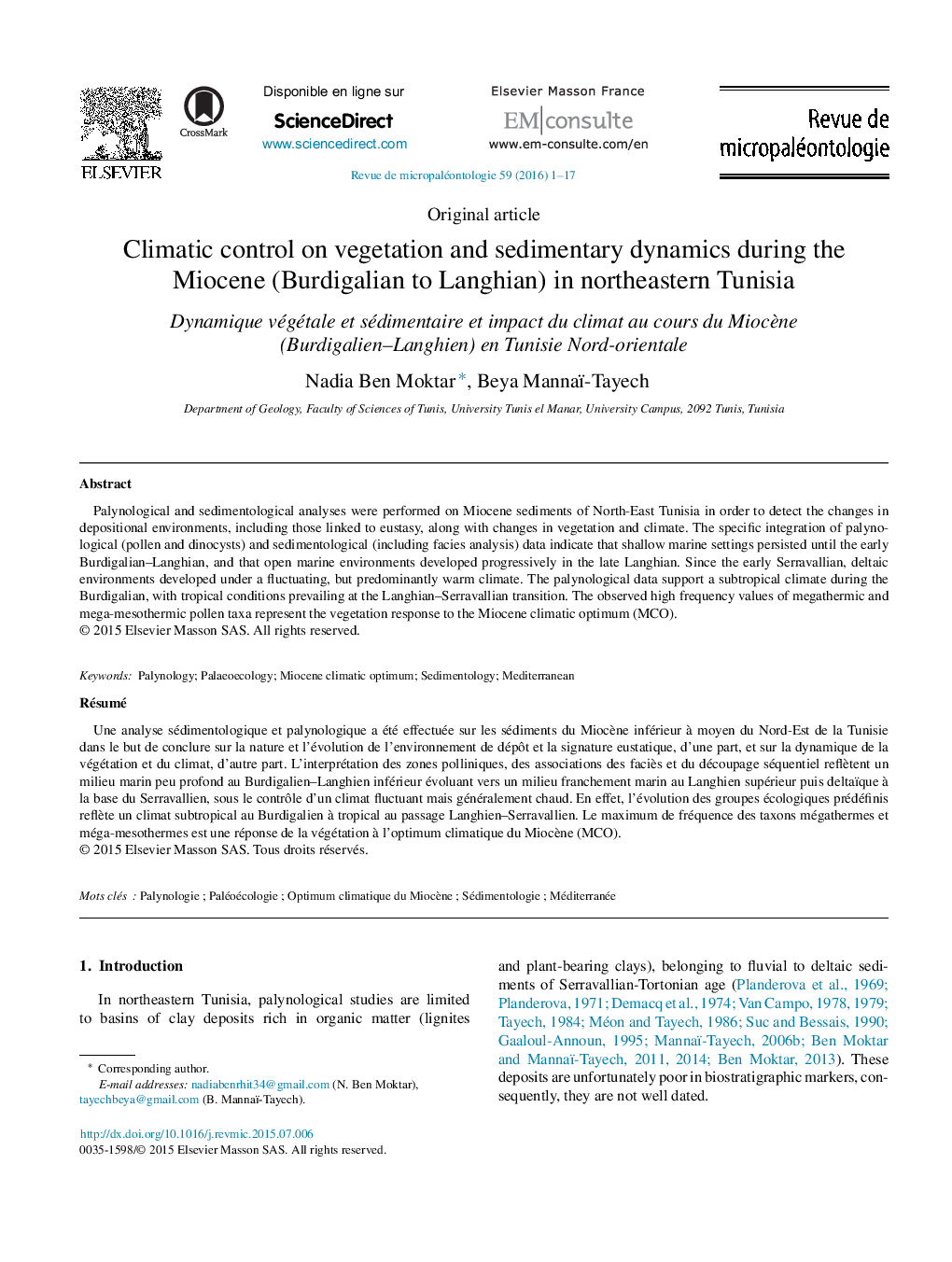| کد مقاله | کد نشریه | سال انتشار | مقاله انگلیسی | نسخه تمام متن |
|---|---|---|---|---|
| 4751523 | 1361080 | 2016 | 17 صفحه PDF | دانلود رایگان |
Palynological and sedimentological analyses were performed on Miocene sediments of North-East Tunisia in order to detect the changes in depositional environments, including those linked to eustasy, along with changes in vegetation and climate. The specific integration of palynological (pollen and dinocysts) and sedimentological (including facies analysis) data indicate that shallow marine settings persisted until the early Burdigalian–Langhian, and that open marine environments developed progressively in the late Langhian. Since the early Serravallian, deltaic environments developed under a fluctuating, but predominantly warm climate. The palynological data support a subtropical climate during the Burdigalian, with tropical conditions prevailing at the Langhian–Serravallian transition. The observed high frequency values of megathermic and mega-mesothermic pollen taxa represent the vegetation response to the Miocene climatic optimum (MCO).
RésuméUne analyse sédimentologique et palynologique a été effectuée sur les sédiments du Miocène inférieur à moyen du Nord-Est de la Tunisie dans le but de conclure sur la nature et l’évolution de l’environnement de dépôt et la signature eustatique, d’une part, et sur la dynamique de la végétation et du climat, d’autre part. L’interprétation des zones polliniques, des associations des faciès et du découpage séquentiel reflètent un milieu marin peu profond au Burdigalien–Langhien inférieur évoluant vers un milieu franchement marin au Langhien supérieur puis deltaïque à la base du Serravallien, sous le contrôle d’un climat fluctuant mais généralement chaud. En effet, l’évolution des groupes écologiques prédéfinis reflète un climat subtropical au Burdigalien à tropical au passage Langhien–Serravallien. Le maximum de fréquence des taxons mégathermes et méga-mesothermes est une réponse de la végétation à l’optimum climatique du Miocène (MCO).
Journal: Revue de Micropaléontologie - Volume 59, Issue 1, January–March 2016, Pages 1–17
